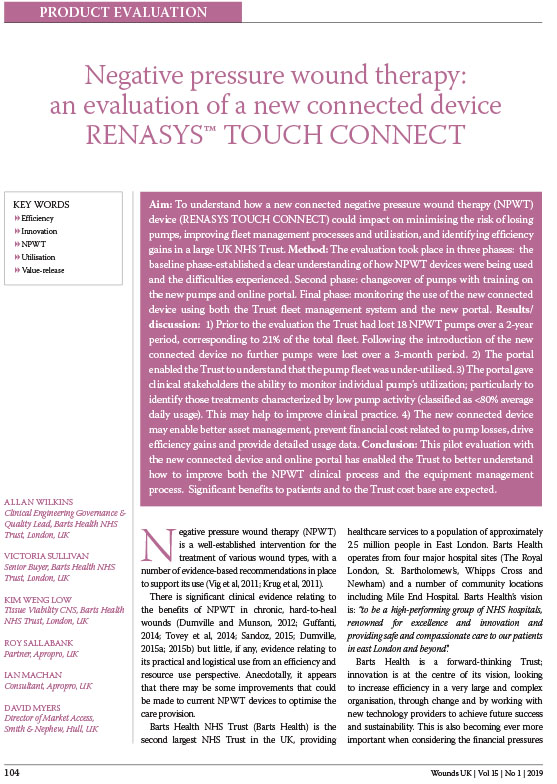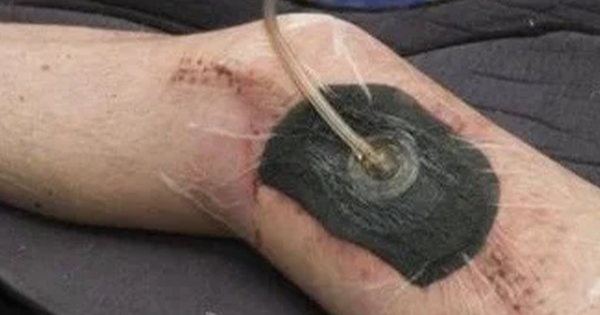Aim: To understand how a new connected negative pressure wound therapy (NPWT) device (RENASYS TOUCH CONNECT) could impact on minimising the risk of losing pumps, improving fleet management processes and utilisation, and identifying efficiency gains in a large UK NHS Trust. Method: The evaluation took place in three phases: the baseline phase-established a clear understanding of how NPWT devices were being used and the difficulties experienced. Second phase: changeover of pumps with training on the new pumps and online portal. Final phase: monitoring the use of the new connected device using both the Trust fleet management system and the new portal. Results/discussion: 1) Prior to the evaluation the Trust had lost 18 NPWT pumps over a 2-year period, corresponding to 21% of the total fleet. Following the introduction of the new connected device no further pumps were lost over a 3-month period. 2) The portal enabled the Trust to understand that the pump fleet was under-utilised. 3) The portal gave clinical stakeholders the ability to monitor individual pump’s utilization; particularly to identify those treatments characterized by low pump activity (classified as <80% average daily usage). This may help to improve clinical practice. 4) The new connected device may enable better asset management, prevent financial cost related to pump losses, drive efficiency gains and provide detailed usage data. Conclusion: This pilot evaluation with the new connected device and online portal has enabled the Trust to better understand how to improve both the NPWT clinical process and the equipment management process. Significant benefits to patients and to the Trust cost base are expected.





